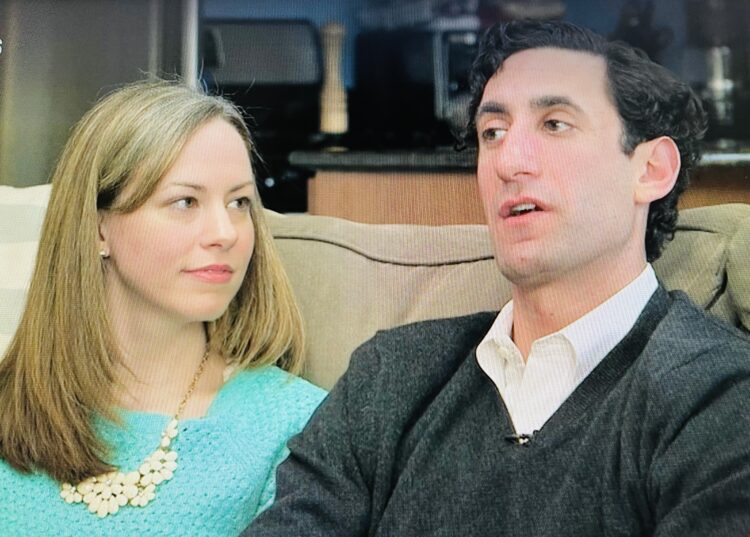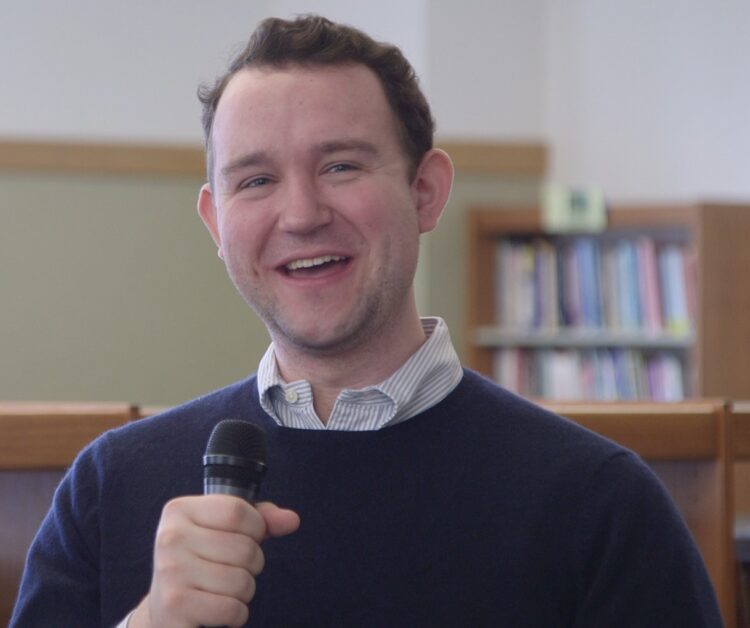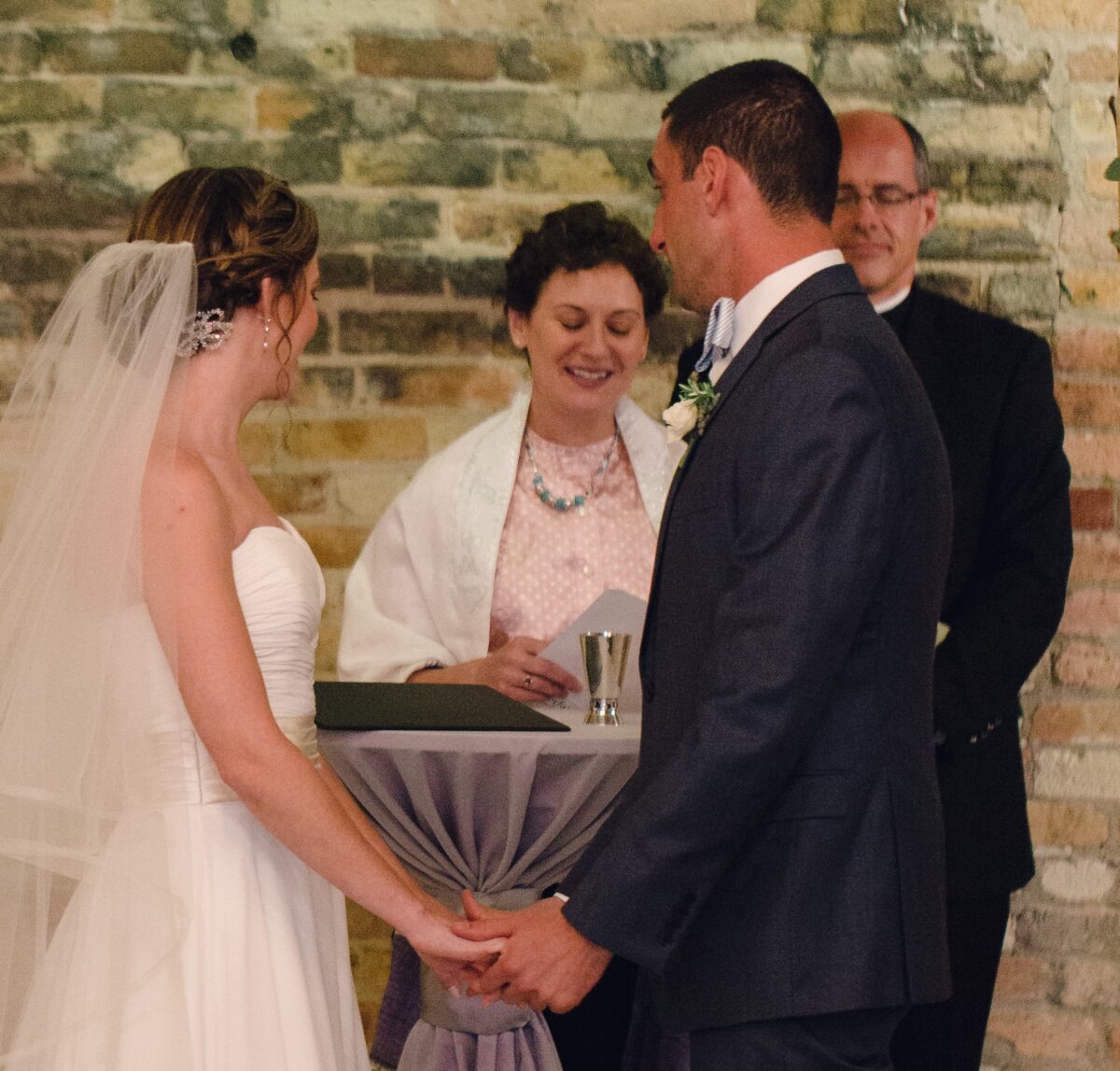One survey after another confirms that most married Jews in the United States are in mixed marriages partnered with non-Jews. This trend emerged in the 1960s and has become an unstoppable force as America grows more diverse and complex in terms of its multiracial composition.
It goes without saying that a mixed marriage is at least one indicator of an open and tolerant society, the persistence of racism and antisemitism notwithstanding. But as a nation of immigrants from its earliest decades, the United States has always been something of a melting pot.
This issue is examined in some depth in Leaps of Faiths, a documentary by David Kovacs and Steve Ordower now available on the ChaiFlicks streaming platform. Although it focuses on Jewish-Catholic unions in Chicago, it provides viewers with a broad picture of this recurring phenomenon.

The film unfolds through interviews with couples and religious figures such as Seth and Tracy Preminger and Rabbi Allen Secher and Father John Cusick, who have formed a close and brotherly friendship. Father Tom Hurley, who officiated at the Premingers’ wedding, is interviewed as well.
In an era when people from different walks of life and faiths are brought together, mutually loving relationships crossing religious and ethnic fault lines are bound to appear.

Two rabbis endorse this thesis.
“We live in a world of radical openness,” says Rabbi Evan Moffic.
“People fall in love,” says Rabbi Sam Gordon.
Mixed marriages were not as common several generations ago as they are today. Back in those days, a Jewish person who married out of the faith created a sense of loss in his family, was often regarded as a sinner and a heretic, and was sometimes shunned even by his parents. In the most extreme cases, he or she was pronounced dead.
Although attitudes toward mixed marriages have mellowed in the past few decades, the majority of priests and rabbis still refuse to officiate at such unions, we’re told.
And it remains true that very few Orthodox Jews marry non-Jews, even after they have formally converted to Judaism in an arduous process. Jews who intermarry tend to be highly secular and from Reform and Conservative Judaic backgrounds.
One of the biggest issues facing intermarried couples is the religion in which their future child will be raised. Judging by the couples in this film, the majority of children are brought up in both faiths. This can be a source of confusion, as they freely acknowledge.
Will, a young man, leans toward his Catholic roots, but believes that mixed race people like himself are generally “critical thinkers.” Kyle, a 14-year-old boy, alternates between his two faiths. Still another teenager considers himself fortunate because he can pick and choose from what appeals to him from each religion. As he puts it, “We get Lent and Yom Kippur.”

The school-age children of mixed unions who want both faiths in their lives have the option of attending three special schools in Chicago, New York and Washington that cater to their needs. Unfortunately, the film only glosses over them and what they offer to their students. But otherwise, Leaps of Faiths gives viewers a thoughtful overview of the joys and problems associated with mixed marriages in contemporary America.
